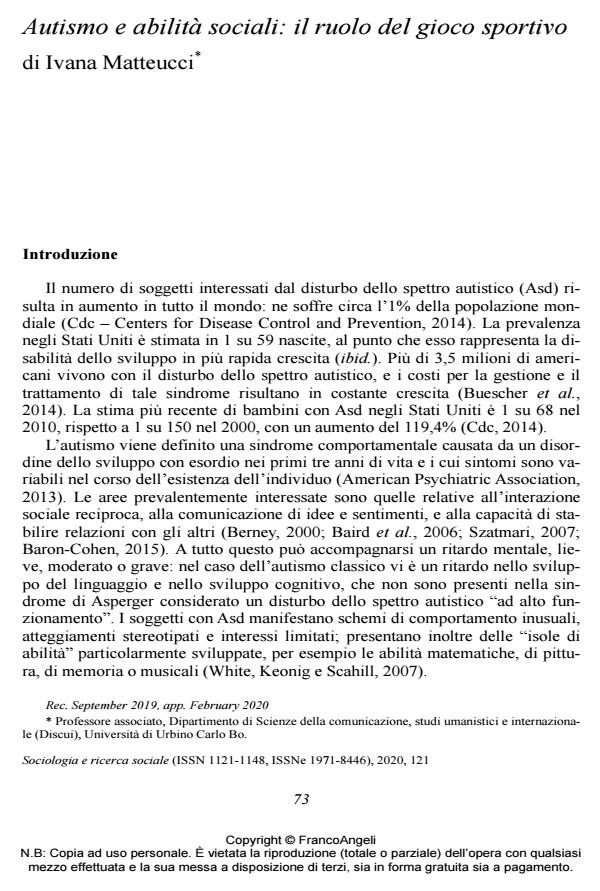Autism and social skills: the role of sport games
Journal title SOCIOLOGIA E RICERCA SOCIALE
Author/s Ivana Matteucci
Publishing Year 2020 Issue 2020/121
Language Italian Pages 17 P. 73-89 File size 230 KB
DOI 10.3280/SR2020-121004
DOI is like a bar code for intellectual property: to have more infomation
click here
Below, you can see the article first page
If you want to buy this article in PDF format, you can do it, following the instructions to buy download credits

FrancoAngeli is member of Publishers International Linking Association, Inc (PILA), a not-for-profit association which run the CrossRef service enabling links to and from online scholarly content.
The aim of this study is to analyze the effects of a physical activity program structured as a sports game on social interaction and communication of adolescents with autism spectrum disorder (Asd), in particular Asperger Syndrome (AS). The results of the quantitative survey showed a general improvement in social skills, in particular relating to social interaction and communication, in the experimental group in interim and post-intervention tests. These results were confirmed by the qualitative survey where, based on the parents' perceptions, the interactive skills related to the acceptance of the others, eye contact, cooperative play, involvement and interaction, and social skills related to both receptive communication (attention and understanding) and expressive communication (prompt response, self-expression), had increased. On the contrary, no statistically significant difference was found in the control group. The study concluded that the special structured physical activity program positively influenced the social interaction and communication skills of adolescents with Asd.
Ivana Matteucci, Autismo e abilità sociali: il ruolo del gioco sportivo in "SOCIOLOGIA E RICERCA SOCIALE " 121/2020, pp 73-89, DOI: 10.3280/SR2020-121004